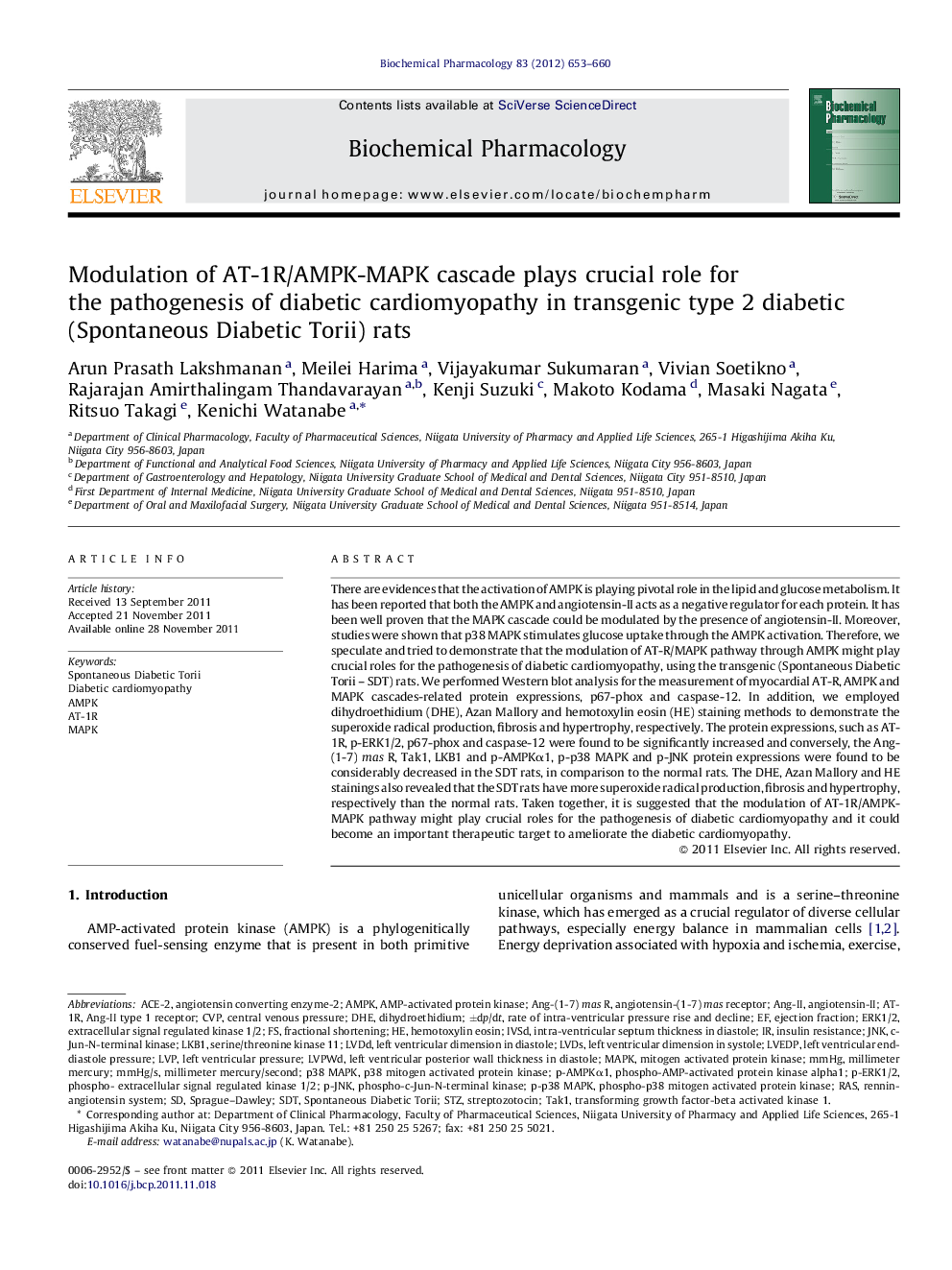| Article ID | Journal | Published Year | Pages | File Type |
|---|---|---|---|---|
| 2512678 | Biochemical Pharmacology | 2012 | 8 Pages |
There are evidences that the activation of AMPK is playing pivotal role in the lipid and glucose metabolism. It has been reported that both the AMPK and angiotensin-II acts as a negative regulator for each protein. It has been well proven that the MAPK cascade could be modulated by the presence of angiotensin-II. Moreover, studies were shown that p38 MAPK stimulates glucose uptake through the AMPK activation. Therefore, we speculate and tried to demonstrate that the modulation of AT-R/MAPK pathway through AMPK might play crucial roles for the pathogenesis of diabetic cardiomyopathy, using the transgenic (Spontaneous Diabetic Torii – SDT) rats. We performed Western blot analysis for the measurement of myocardial AT-R, AMPK and MAPK cascades-related protein expressions, p67-phox and caspase-12. In addition, we employed dihydroethidium (DHE), Azan Mallory and hemotoxylin eosin (HE) staining methods to demonstrate the superoxide radical production, fibrosis and hypertrophy, respectively. The protein expressions, such as AT-1R, p-ERK1/2, p67-phox and caspase-12 were found to be significantly increased and conversely, the Ang-(1-7) mas R, Tak1, LKB1 and p-AMPKα1, p-p38 MAPK and p-JNK protein expressions were found to be considerably decreased in the SDT rats, in comparison to the normal rats. The DHE, Azan Mallory and HE stainings also revealed that the SDT rats have more superoxide radical production, fibrosis and hypertrophy, respectively than the normal rats. Taken together, it is suggested that the modulation of AT-1R/AMPK-MAPK pathway might play crucial roles for the pathogenesis of diabetic cardiomyopathy and it could become an important therapeutic target to ameliorate the diabetic cardiomyopathy.
Graphical abstractFigure optionsDownload full-size imageDownload as PowerPoint slide
